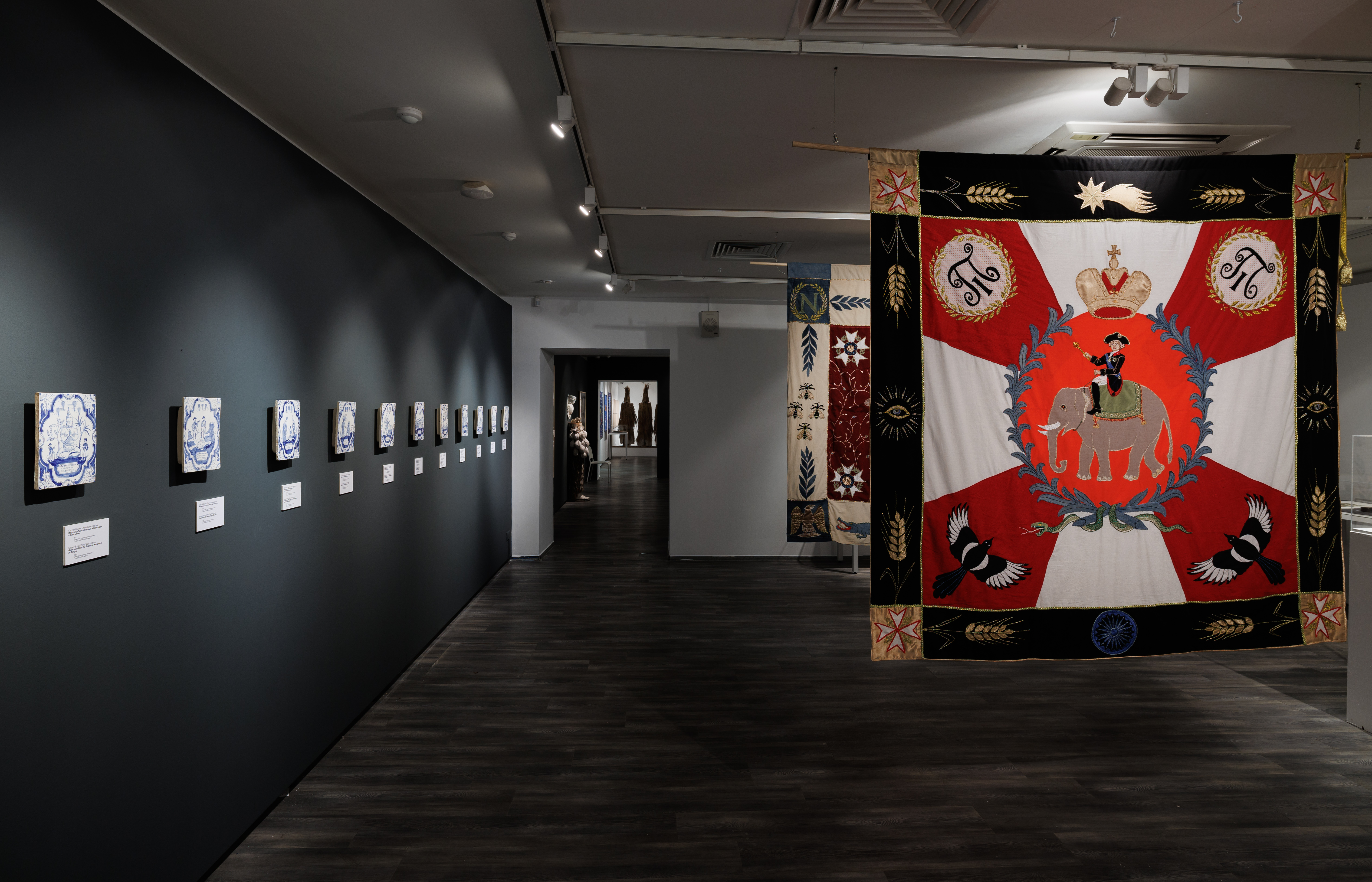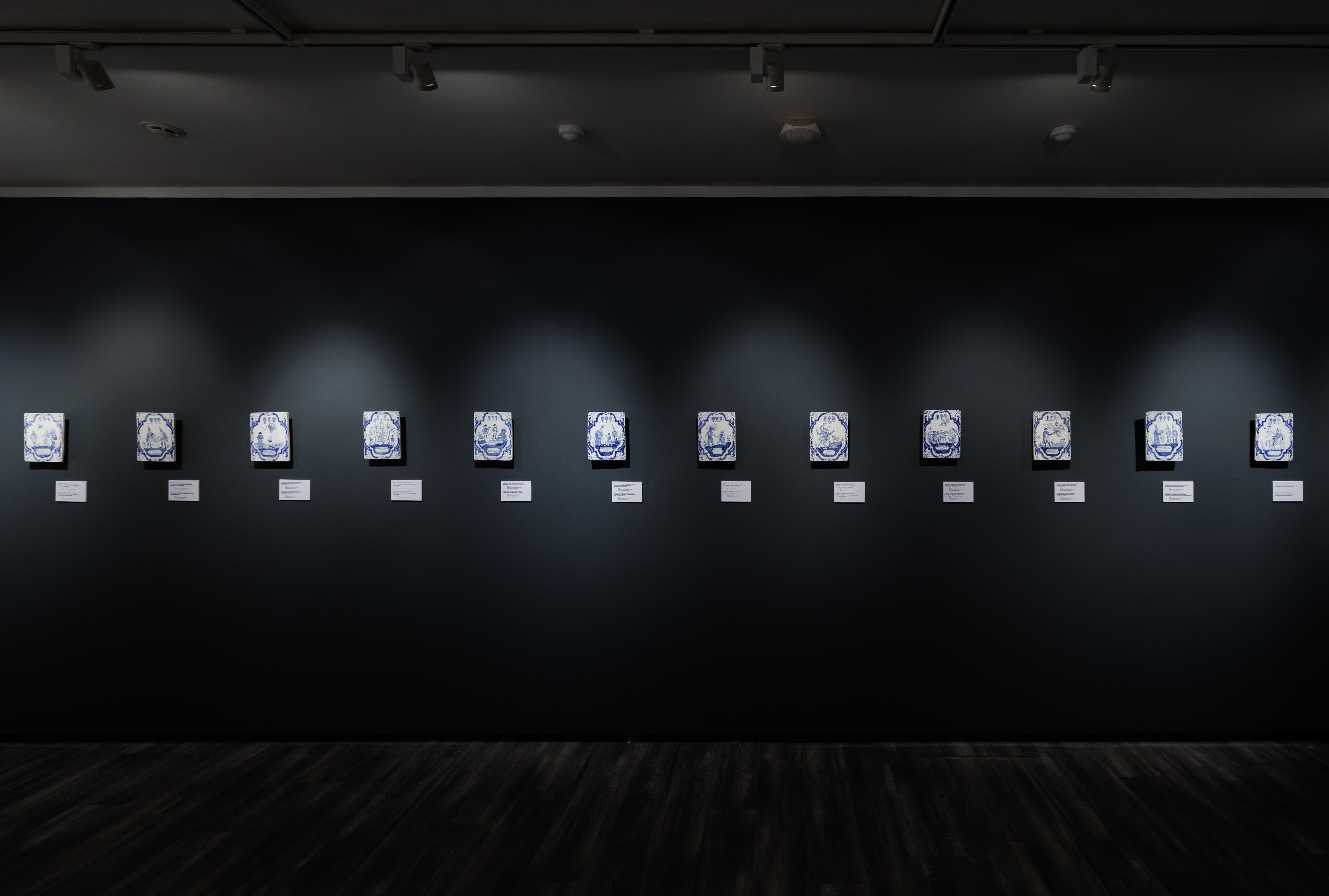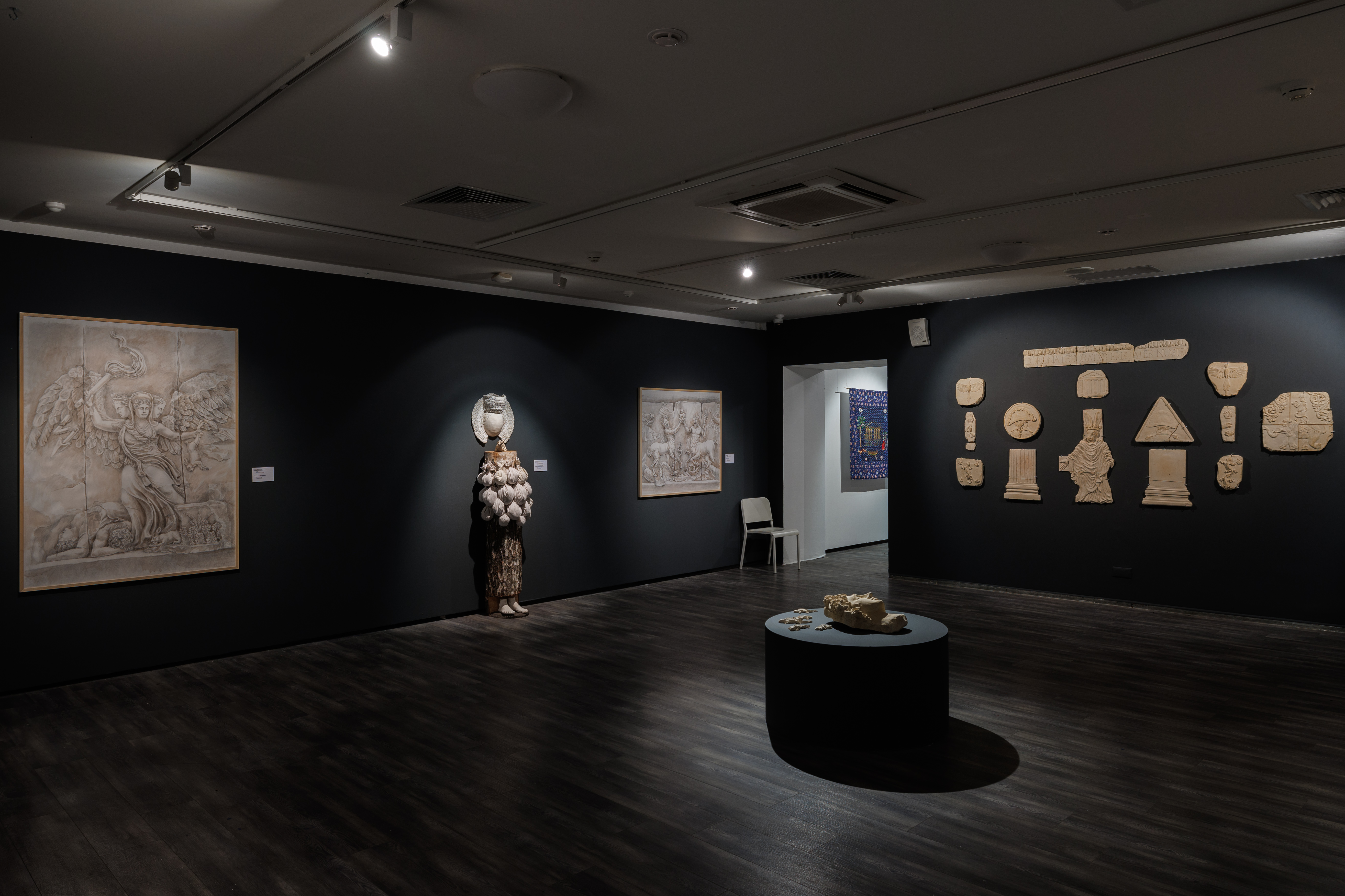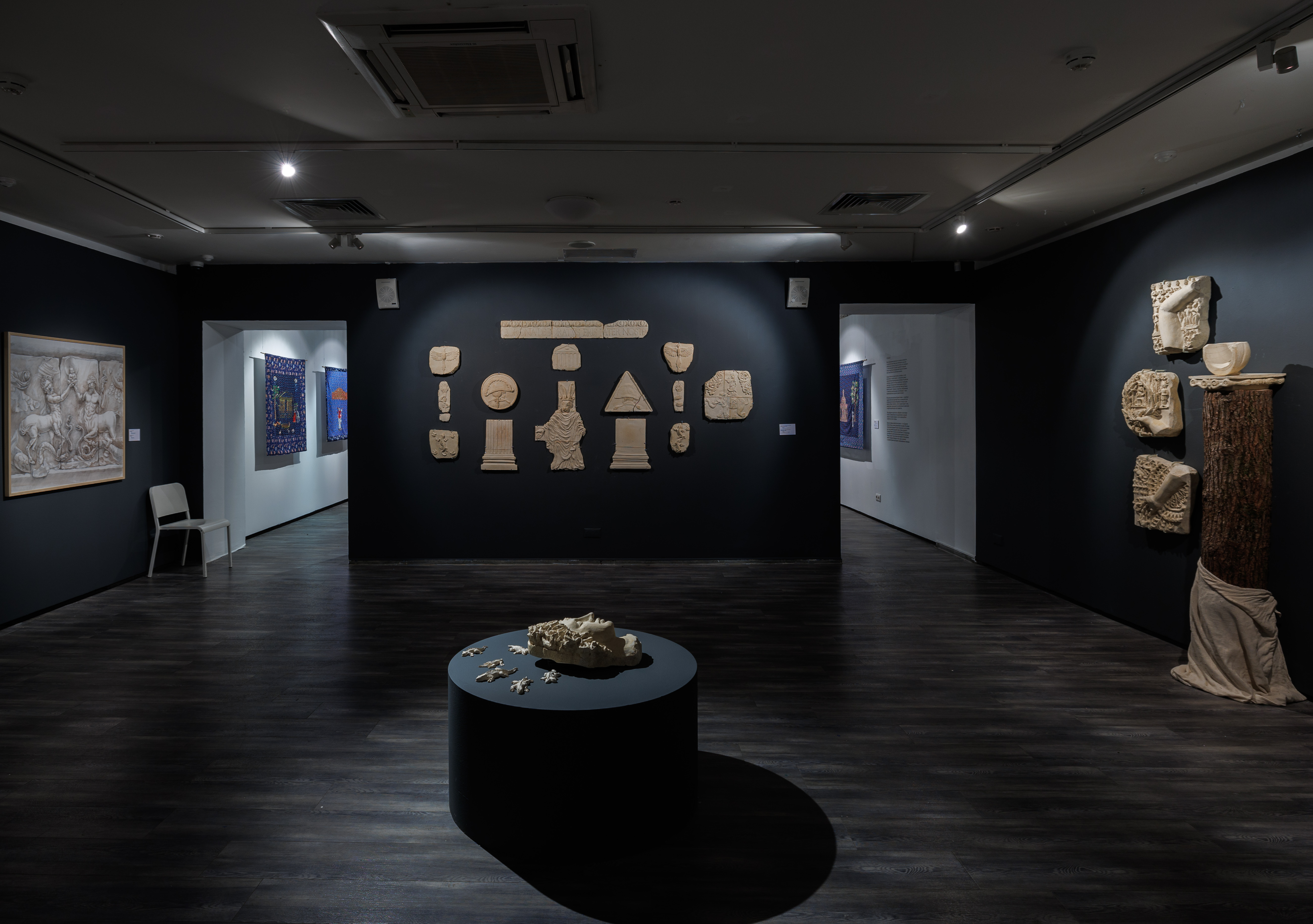Sergey Sonin and Elena Samorodova. Utopia and Uchronia
Personal project.
December 19, 2024 – February 23, 2025
MMOMA Museum, Gogolevsky Boulevard, 10/2
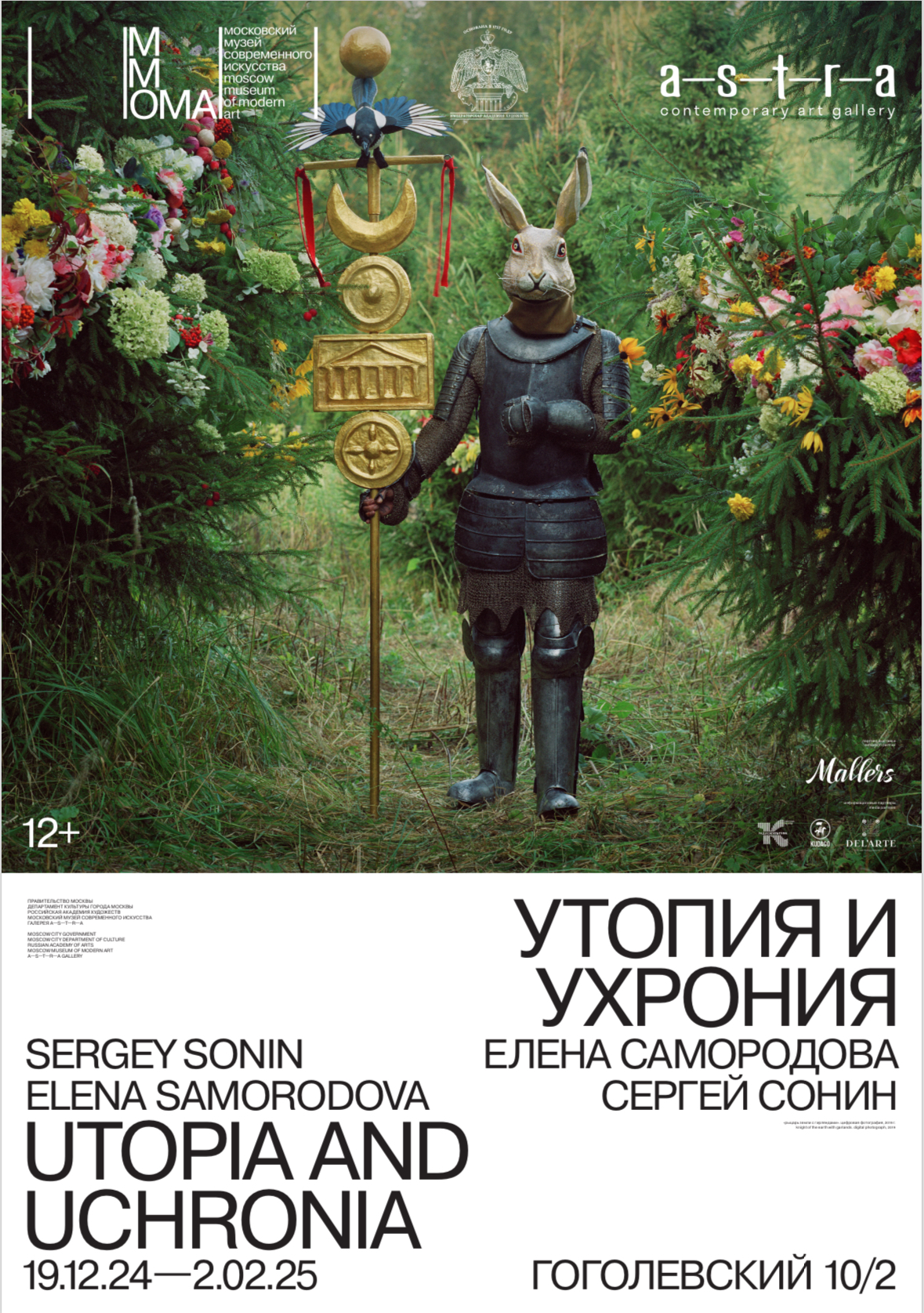
The Moscow Museum of Modern Art, together with the a-s-t-r-a Gallery, presents a solo exhibition by artists Sergey Sonin and Elena Samorodova, "Utopia and Uchronia".
The exhibition will demonstrate the reality of a hypothetical history, presented by the artists in the form of a detailed material world. The narrative created by the artists is a network of cultural and historical connections with numerous references to world artistic culture. The museum halls have been transformed into an imaginary museum-reserve and divided into seven autonomous, but at the same time connected by a common plot, sections-spaces. Using the layout of the museum halls, the viewer goes through these sections in the order set by the authors. One of the starting points of the authors' artistic statement is the understanding and interpretation of antiquity as a constant of eternity, orientalism as a projection of the West onto the East and the spirit of the Enlightenment, freely hovering over times and spaces.
The key to the project is the Lexicon book – a visual dictionary that reveals the meanings and concepts of the authors’ universe, uniting all sections of the exhibition into a single whole. The project, presented at MMOMA, is currently one of the most large-scale statements by visionary artists.
The exhibition includes about 100 works: ceramics, painting, graphics, photography, fabrics, bas-reliefs, etchings and other works. A special place in the project is occupied by the video hall, where unique video frescoes will be shown and a life-size ballet will be presented, performed as a "choreographic prayer".
EXORCISM IN THE RUINS OF ENLIGHTENMENT
Text by Sergey Khachaturov
The creative duo Elena Samorodova - Sergey Sonin (partnership "Lead and Cobalt") can be called mysterious visionaries. They predict the horizons of real history in the version of a documentary myth.
The predetermination of the historical path is encrypted in the landscapes of Central Russia, which the artists call metaphysical. One can add, and alchemical. It is related to the dense forests with wolves, dragons, ruins of sanctuaries and pyramids, which are described in the High Renaissance novel "Hypnerotomachia Poliphili" by the Dominican monk Francesco Colonna, originally from Treviso. The novel was published in 1499 in Venice. In a dream, the main character Poliphili saw a landscape of extraordinary beauty and wildness. In it, he had to undergo an initiation rite, overcome difficulties, emerge victorious, find his other spiritual half, love Polia and complete the Magnum Opus, obtain the elixir of philosophers (the philosopher's stone).
A unique case: Russian nature and its secrets are perceived by the Samorodova-Sonin tandem as a landscape from Poliphilus' dreams. The Central Russian Upland acts as the main character of their performances, in which all types of art interact: music, architecture, dance, sculpture, painting, cinema. The hidden, disturbing landscapes in such suites (the author's title is "video frescoes") as "Tandava of the Middle Belt", "Barter Day", "Preparation for the Indian Campaign. The Dream of a Landowner of the Middle Belt" are not at all a background or decoration for the implementation of conceptual tricks. This is the womb that creates a life that is unyielding to common sense. In such a mystical, alchemical radiance of ideas is the fundamental difference between the strategy of "Lead and Cobalt" and postmodernist egocentric mind games. Spatial expansion is the essence of the Empire style. All Napoleon's campaigns are a desire to satisfy his spatial hunger, to subjugate not only countries and civilizations, but also parallels and meridians. It is not without reason that the echoing empty corridors, washed by streams of light, as if weathered, draught-polished furniture of the most exquisite silhouettes with inlays of many ancient cultures, are archetypes of Empire poetics.
Osip Mandelstam's poem "Nature is the same Rome and is reflected in it" is ideally projected onto the visual image of video semantics by Elena Samorodova and Sergey Sonin. In these frescoes, fog spreads across hollows and groves, hay sheaves dance in circles, hare-lopes-surveyors perform their mysterious ritual dance, Palladian colonnades and arches are built from trees and branches, and dendro-Palladian ones burn...
Inside alchemical dreams on the theme of empire and archetypal images of Russia (hare-surveyor), interesting stories are born and swarm, supporting continental perspectives. Russia is at the crossroads of rational ideas of the European Enlightenment and Eastern wisdom, mysticism. The enlighteners and romantics themselves wanted to combine the trajectories of the East and the West. China was a cherished country for Diderot, Voltaire, Goldsmith. In him they saw wisdom unspoiled by Western culture, the Confucian ability to live in harmony with nature. The alchemist, Freemason, and romantic Vladimir Odoevsky in his novel "4338" written in 1835 shows the future (this future Sonin-Samorodova calls "uchronia"), in which Russia and China became the centers of world power. In their projects, Sonin and Samorodova seem to be direct heirs to the mesmeric experiments of Vladimir Fedorovich Odoevsky. Their quantum reality includes a comet, a Russian-Chinese and Russian-Indian alliance, which significantly corrected the future in the era of landlord Russia. The main thing is that all these themes mature in the process of alchemical initiation. And the vastness of the Central Russian Upland obliges one to it.
The world of artists is very complex and flawlessly designed, down to the smallest artifacts, which take us back to the estate amusements of landowners of the era of Catherine II, Paul I, Alexander Pavlovich... I mean bead embroidery, diary entries, the arrangement of wonder parks with chimeras and monsters, as well as other intricate ideas. All the artifacts are incredibly finely crafted, with inlays of various ancient techniques (in carpet weaving, in particular, the medieval millefleur technique is resurrected). Taken together, the various stories, filigree directed by "Lead and Cobalt", receive a resonant interpretation in world art. A dialogue is established with those artists who chose as the core of their performances not total nihilism or witty parodies, but a return to myth and ritual. I mean first of all Joseph Beuys and Matthew Barney. According to Beuys researchers (Yves-Alain Bois), his performative practices restore the hierarchical relations between the performer and the viewer. This is opposed to the idea of total involvement and complicity, which was accepted in happenings, for example. An even more multi-level, hierarchical system of myth presentation is in Matthew Barney's synthetic projects. They can be called Wagnerian Gesamtkunstwerk ("synthetic art object"). Such hierarchy erects a cult of shaman, guru, alchemist. Let us take into account that Beuys seemed to attract different substances of the material - fat, felt - in their hermetic secret hypostasis. Matthew Barney in his new project "Redoubt" chooses a forest, a thicket, a wolf hunt in the icy wilderness to reinterpret the myth of Diana and Actaeon. Saturates the program with various images, including copper reliefs and sculptures from burnt trees.
Such shamanic, alchemical works with the dictatorship of a strong scenario and a vivid image system for Beuys, Barney, and Sonin-Samorodova are, in my opinion, a strong therapy for the collective memory of humanity. In quantum, alternative paths of historical movement, the theme of "the desire for memory" is rehabilitated. Contrary to the models of post-history, the suppression of identity as a result of greedy capitalist consumption, Beuys, Barney, the tandem "Lead and Cobalt" assert the need to revive historical memory in its very roots. At the same time, the utopian and uchronic optics and the scenario of the revival of history with all responsibility justify the thesis about the impossibility of adequately representing the past.
It is curious that one of the projects created by Elena and Sergey is called "Gogol. Rome. From the Third to the First". It tells of Nikolai Vasilyevich's journey to Italy, his meeting with Padre Lorenzo Sforza, who possessed the gift of exorcism. Exorcism is a rite of exorcism. I believe that with their versions of the branching paths of history, Samorodova and Sonin exorcise the demons of pride, arrogance and vanity in relation to their own past. In this status of ironic but passionate philosophers, they are the heirs of the great enlighteners of the 18th century, who were able to turn even sad ruins into a meaningful dialogue between the past and the present.
